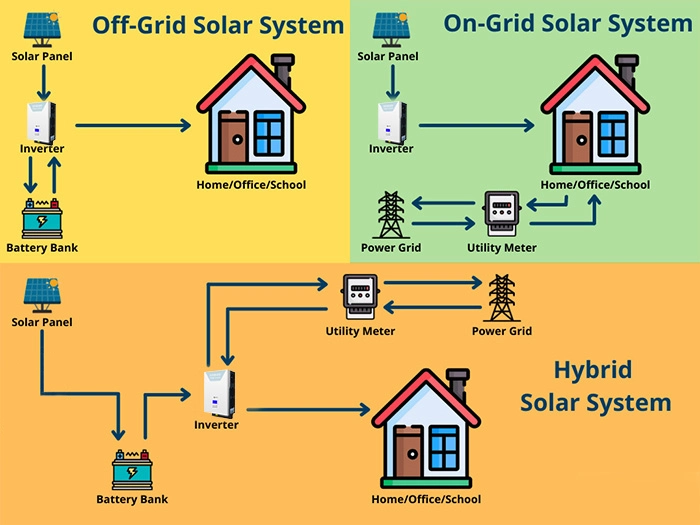Solar Rooftops
A rooftop solar power system is a photovoltaic (PV) system that has its electricity-generating solar panels mounted on the rooftop of a residential or commercial building or structure. Solar rooftop solution is for a variety of customers like residential, commercial & industrial, institution, etc. Residential - Residential solar rooftop solutions can provide free and uninterrupted electricity for years together while at the same time it is contributing to a green environment. Residential solar rooftop systems are easy to install and require minimal maintenance. Commercial & Industrial - Commercial rooftop solutions offer a guaranteed return on investment by reducing electricity bills

| On-grid solar system |
|---|
The on-grid solar roof top system converts solar power into grid power. The On-grid system is connected with a utility grid (like BESCOM in Bangalore) and this system would work only if the grid is available. The roof top system consists of a series of solar panels which are mounted on roof and connected together to convert solar radiation to electrical energy. The electrical energy from the series of panels is fed into an inverter so that the energy can be converted in alternating current compatible with grid power. It can produce surplus electricity that can meet the energy requirements of not just the residential sector but also the commercial and industrial sectors. Solar rooftop on-grid system is a reliable, easy-to-install system with a lifespan of 25 years using existing roof space to generate clean energy helping you save on electricity charges
| Off-Grid Solar system |
|---|
An off-grid solar system functions independently. People don’t need to connect solar panels to any grid. However, this system requires a battery backup to store the solar power generated during the day.
The off-grid solar system consists of solar panels, a charge controller, a battery, mounting structures, and an inverter. The solar panels capture sufficient sunlight during sunshine hours and the battery stores excess charge to power all the electrical appliances at night.
This system is self-sustaining and ideal for areas with no power grids.
| Hybrid Solar System |
|---|
Get the functionality of both on-grid and off-grid solar solution in our hybrid solar solution combos and experience the most reliable, efficient and powerful performance you can ever have. The hybrid solar system is connected to the grid via net metering and also has a battery backup to store the power. The energy that solar panels collect goes through a hybrid solar inverter to generate electricity.
The most important benefit of a hybrid solar system is the power backup facility. It means you can continue using electricity without disruptions even during power outages. A battery backup helps store the extra power generated by the solar system during peak hours.




